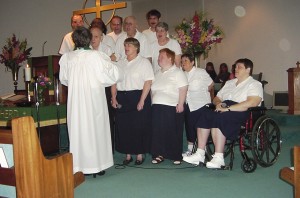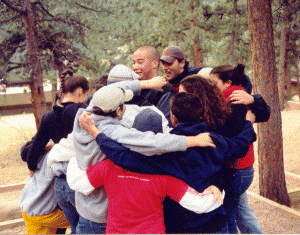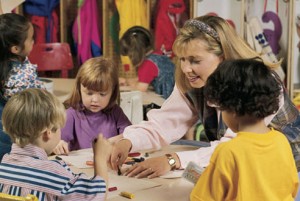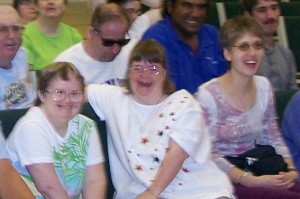 With the stir of the new movie, The Help, I’ve been reminded that the hardest part about directing a choir of mentally challenged people is teaching them to look at me. In the twenty years that I have been a choir director for persons who are developmentally delayed for The Special Gathering, this has been a constant and consistent problem.
With the stir of the new movie, The Help, I’ve been reminded that the hardest part about directing a choir of mentally challenged people is teaching them to look at me. In the twenty years that I have been a choir director for persons who are developmentally delayed for The Special Gathering, this has been a constant and consistent problem.
In the 1960′s when the Jesus Movement was sweeping across America, my husband and I were swept into the miraculous wonder of the Holy Spirit’s healing touch. Though I was very young, almost daily, I had the privilege of praying for people. Occasionally, these were African-American women who were visiting our home. With this wonderful population of women, I was always faced with the same problem. They refused to look at me.
No matter how bold they had been in conversation, when it came time to pray, they all took the same posture. They would sit with their heads pressed to their chests and their hands clasped in their laps, too timid to move or speak.
I felt that the Lord told me that part of what was needed for them was to insist that they raise their heads and look at me, eye to eye. At times, I had to physically force their heads upward. Amazingly, once these women began to look up, there was a visual transformation that happened every time. They seemed to come alive with joy and acceptance. Laughing and crying at the same time, they would say, usually in a reverent whisper, “I’m free!”
I wasn’t totally surprised to also have this problem in the mentally challenged community. This cloistered, sub-culture is made up of individuals who are told all their lives, ”Sit down. Be quiet and don’t draw attention to yourself.”
Even if those words are not spoken, they are told that a million times in their lives in a multitude of different ways. I remember a funeral that I attended. The father of one our members had died. At that time, Nora was in her mid-thirties. She is a high functioning, well-spoken, sophisticated woman. Several times before and after the funeral service, her mother, brother and two sisters gathered in a circle. Comforting each other, they joined in a large group hug. Nora was never a part of the hug. She stood on the outside grasping her arms close to her chest, weeping alone.
I don’t care how tonally correct the members of the choir sing but I do care whether they look at me or not. For some of the members, this is especially difficult. For it is not only part of the mentally challenged community culture to not look people in the eye; but it is also part of their disability. Yet, I have never had one person who has not learned to overcome his training and disability. They have all learned to look at me.
Each new member thinks I’m incredibly horrible when I harp on them, not allowing them to look away for a second. Usually by the time they have trained themselves to look at me, another person will join the choir. Then she sees that I have to go through the same thing with the new, fledgling performer. Almost, without exception, she will say in a patient, mentoring voice, “You can do it. I had to learn and you can too.”
There is an element of self-worth that is essential in maturing in the Christian faith. Through Christ’s sacrifice, God makes us his children, not his slaves or lackeys. Perhaps the greatest joy I have when the choir performs is not the musical quality or the correct enunciation of all the words but 12 sets of eyes that meet mine and look at me, eye to eye. Equal partners in ministry, holding our heads and hearts high.
It makes me want to have a large, group hug with no one left outside grasping their arms.
Have you found that making eye contact is important to self-worth? What are some other signs of a good self-worth?

